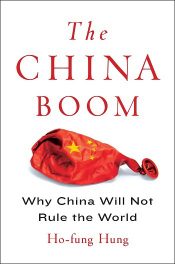 Editors: David Seidl, Georg von Krogh, and Richard Whittington
Editors: David Seidl, Georg von Krogh, and Richard Whittington
Publisher: Cambridge University Press – 343 pages
Book Review by: Sonu Chandiram
Management strategy, particularly as it related to getting ahead of competing companies, was for many decades, a highly confidential area reserved only for senior executives. Many mid-level managers were unaware of what their superiors were doing to propel the company forward. Strategy was for the most part, closed.
In today’s world, it is much different. Many firms have adopted the idea of Open Strategy, after numerous research studies have shown that it is highly effective in increasing revenues and profitability, and beating the competition.
Perhaps the most important and dramatic instance of change in management strategy came about in 2006 with an initiative launched by IBM. Instead of giving you bits and pieces of this initiative, we are going to directly quote here the features of this initiative from none other than IBM itself:
“In July 2006, IBM kicked off a defining moment in collaborative innovation: arguably the largest online brainstorming session ever held. The event was the IBM ® InnovationJam ® and it attracted more than 150,000 participants from 104 countries and 67 different companies over the course of two 72-hour sessions.
They were drawn by IBM CEO Sam Palmisano’s objective to invest up to US$100 million to develop and bring to market the best ideas from the event. Their dialog resulted in tens of thousands of creative and far-reaching ideas, many of which are already having an impact on business and society today.
“We opened up our labs, said to the world, ‘Here are our crown jewels, have at them,’” said Palmisano. He had good reason to share: an earlier visit to the company’s labs had convinced him that many great ideas were percolating, but behind closed doors. In his mind, they weren’t going to escape into the market using traditional development methods.
It was an earlier jam—ValuesJam, in 2003—that crystallized the core IBM value of “Innovation that matters.” “But there were still gaps in our capabilities, still people who confused technological invention with true innovation,” said David Yaun, a corporate communications vice president who ran IBM’s innovation programs at the time. “Experiential programs like InnovationJam featured both the outcomes and the collaborative nature of true innovation.”
In that regard, IBM’s jams represent a new form of organizational intervention, a way to accelerate change. As their name suggests, these jams are like jazz improvisations, connecting people who might otherwise never meet, allowing them to formulate and build on each other’s thoughts, and in the process, create something entirely new. Because they are radically open and democratic—everybody has the same capacity to participate, regardless of level or expertise—jams speak to the expectations of today’s professional worker.”
Essentially, Open Strategy is no longer just an idea relegated to research studies but is alive and well, and being used widely by many companies.
We present to you below the contents of this Cambridge book by listing its chapters
Introduction
- Part I – The Concept of Open Strategy
- Defining Open strategy: Dimensions, Practices, Impacts, and Perspectives
- Participation Research and Open strategy
- Open Innovation and Open strategy: Epistemic and Design Dimensions
- Strategic Openness and Open strategy
- Part II – Practices of Open Strategy
- Practices of Inclusion in Open strategy
- Inter-organizational Strategizing
- Crowd-sourcing in Open Strategy: What Can Open Strategy Learn from Open Innovation?
- Practices of Transparency in Open Strategy: Beyond the Dichotomy of Voluntary and Mandatory Disclosure
- Orientations of Open Strategy: From Resistance to Transformation
- Part III – Technological Assemblages for Open Strategy
- Open Strategy and Information Technology
- Social Media in Open Strategy: A Five-Flows Model of Strategy Making and Enactment
- Visuals in Open Strategy
- Part IV – Theoretical Perspectives
- Practice-Theoretical Perspectives on Open Strategy: Implications of a Strong Programme
- A Sense-making Perspective on Open Strategy
- A Dialogic Perspective on Open Strategy
- A Social Network Perspective on Open Strategy
- An Institutional Perspective on Open Strategy
- Part V – Challenges of Open Strategy
- The Politics of Openness
- The Relation between Openness and Closure in Open strategy: Programmatic and Constitutive Approaches to Openness
Editors:
David Seidl is a Professor of Organization and Management at the University of Zurich in Switzerland. He is a member of several editorial boards including Organizational Studies where he is currently a Senior Editor. He has written and co-edited several books, including the Cambridge Handbook of Strategy as Practice (2012).
Georg von Krogh is a Professor at ETH Zurich and holds the Chair of Management and Innovation. He also holds an honorary position as Research Fellow at Judge Business School at the University of Cambridge. Von Krogh has published several books on strategy, organization and Innovation, and serves as Editorial Board member of various journals including the Academy of Management Journal, and Journal of Strategic Information Systems, among others. He is a Senior Editor at the Academy of Management Discoveries.
Richard Whittington is Professor of Strategic management at the Said Business School and New College at the University of Oxford. He has published 10 books, including the leading textbook Exploring Strategy, 12th edition (2019), and the research monograph Opening Strategy: Professional Strategists and practice Change, 1960 to Today (2019) He is an Associate Editor of the Strategic Management Journal.







